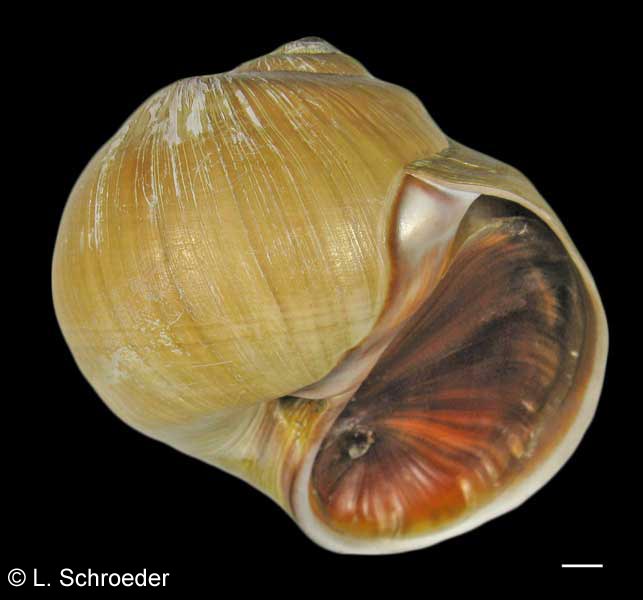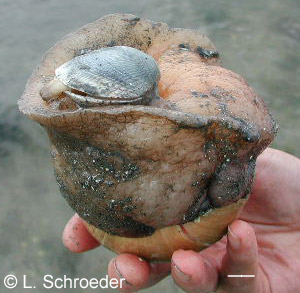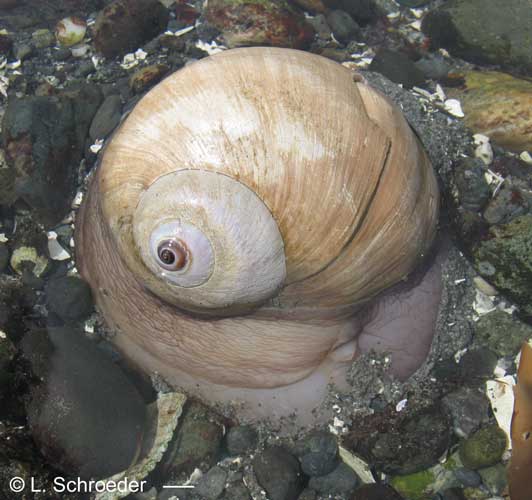Gastropods
Family Velutinidae & Naticidae
Click on photo to enlarge. Scale line in photo equals 1cm unless otherwise specified.
* Species which are commonly encountered on the beach.
Marsenina rhombica (Dall, 1871)
Marbled Lamellarid
intertidal to subtidal size to 40mm
northern Mexico to southern Alaska
This
is rarely found. It is very difficult to spot against the
compound tunicate on which it lives. The body of the animal
blends in perfectly and the shell is barely visible.
(previous name - Lamellaria rhombica)
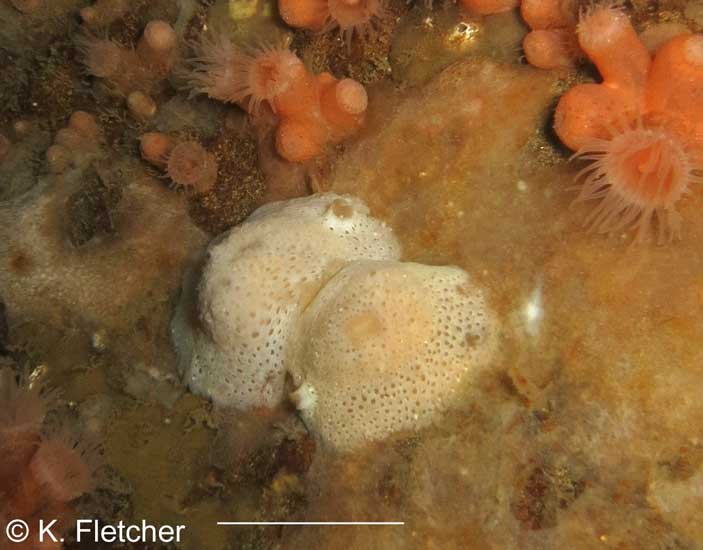 Rich Passage, WA,
subtidal
Rich Passage, WA,
subtidal
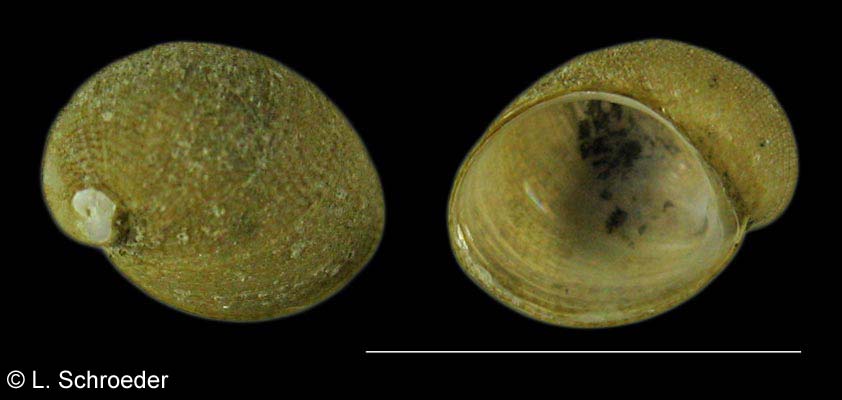
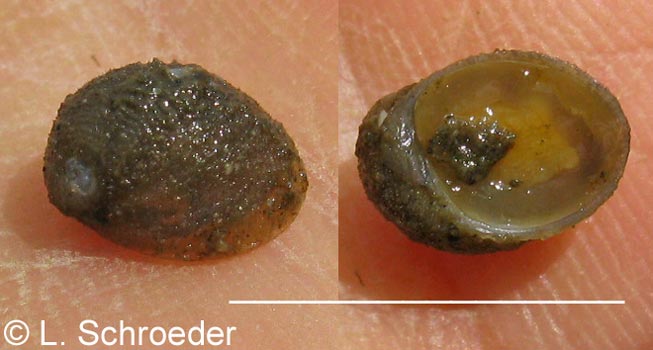
Oak Bay, WA
Oak Bay,
WA, intertidal
Velutinidae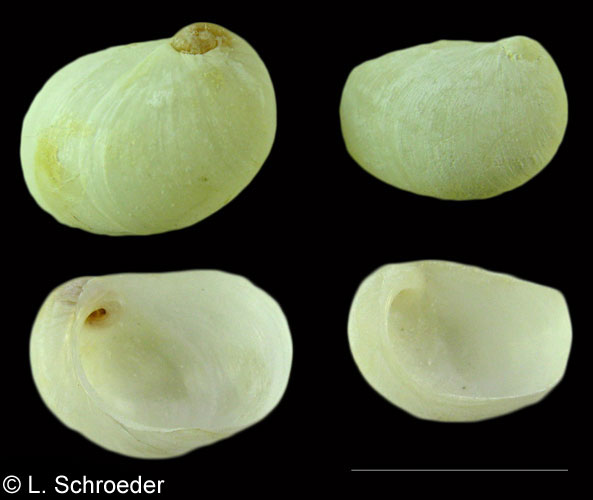 Neah Bay, WA
Neah Bay, WA
Marsenina stearnsii (Dall, 1871)
Stearn's Ear Shell
intertidal
to 19m northern Mexico to central
Alaska size to 20mm
This
is rarely found. The pattern of spots on the animals body perfectly
blends with the compound tunicates on which it lives. The empty shell
looks identical to that of M. rhombica. They can only be identified by
the living animal.
(previous name - Lamellaria stearnsii)
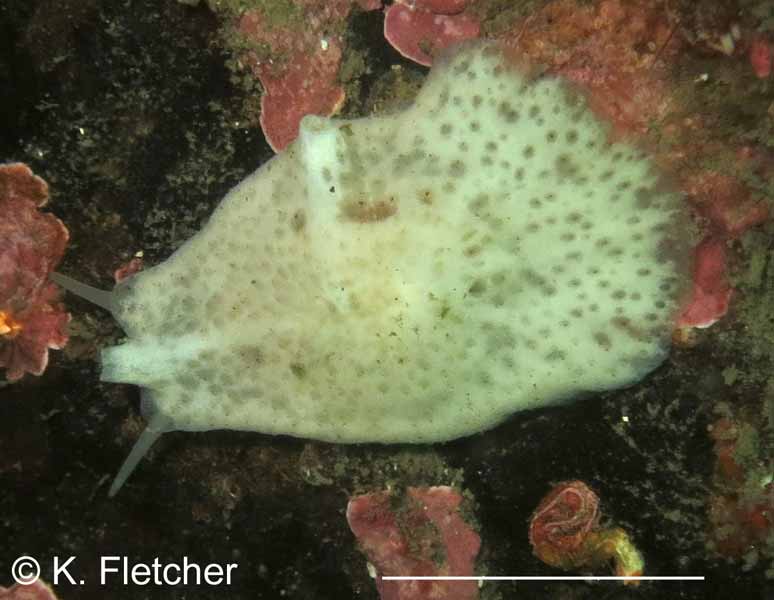
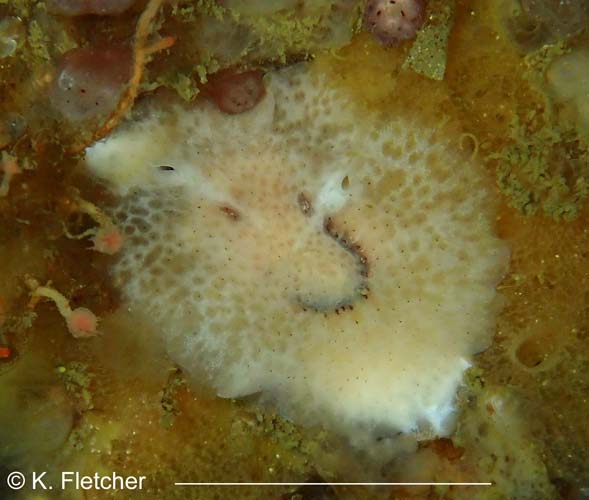
Port Townsend, WA, subtidal
Pearse Islands, BC, subtidal
Marsenina zadei Behrens, Ornelas & Valdes, 2014subtidal,
at least 3-15m Monterey Co., CA to
Pearse Islands, BC size to 15mm
This
small species is found on an encrusting compound ascidian where it is
well camouflaged. The mantle is off-white to tan to orange and is
sprinkled with black specks. Some specimens exhibit a dark brown
horseshoe mark and within this mark are tubercles. The shell is a
translucent white and exhibits growth lines.
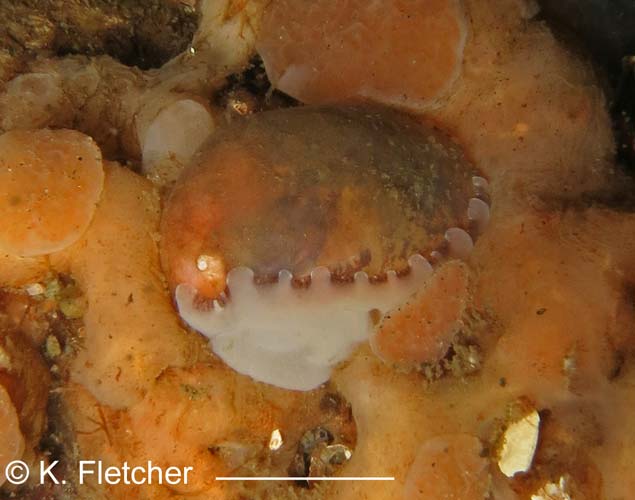
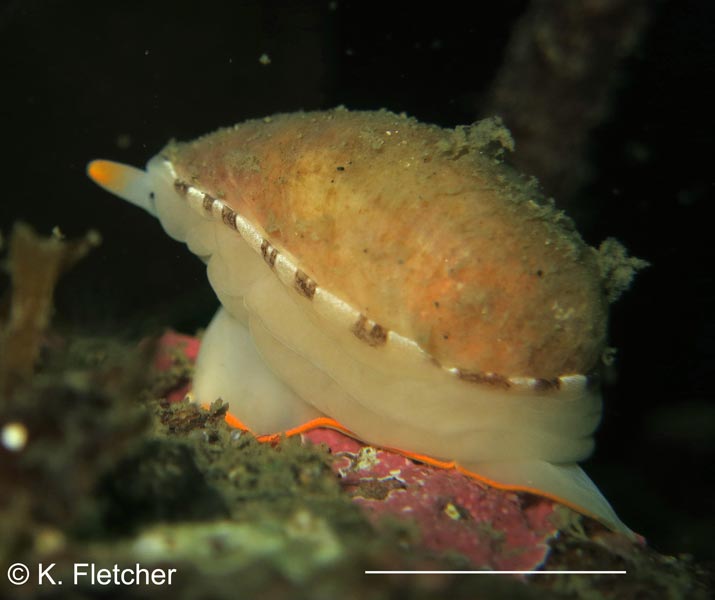
Rich Passage, WA, subtidal
Port Townsend, WA, subtidal
San Juan Islands, WA
Petersburg, AK, intertidal
Cryptonatica affinis (Gmelin, 1791)Arctic Moonsnail
Very
low intertidal to subtidal northern
Mexico to northern Alaska size to 25mm
This
is rarely found intertidally. This animal has a calcareous operculum. The
shell is virtually identical to C. aleutica. They can be differentiated by the live animal. In this species the body of the animal is pure white.
(synonyms - Natica affinis, Natica clausa, Cryptonatica clausa)
This page last revised: 8-15-2019
Limneria prolongata (Carpenter, 1864)
Smooth Velvet Snail
intertidal to 100m size to 22mm
central California to northern Alaska
This
is infrequently found intertidally. It lives under rocks. The shell has
a brown periostracum. The animal has a distinctive orange margin
on the foot and banded markings on the mantle.
(previous name - Velutina prolongata)
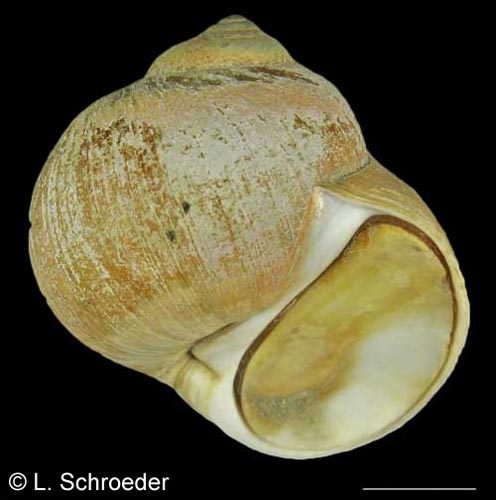
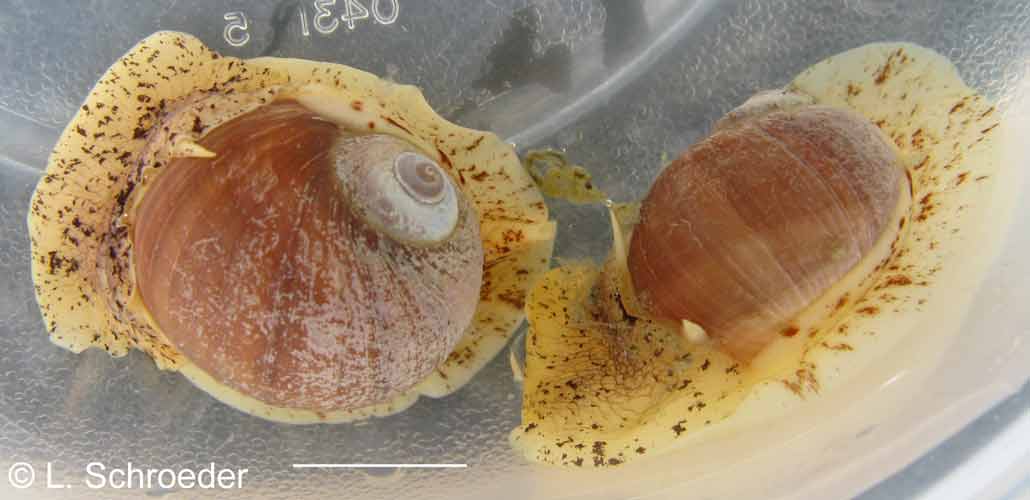
San Juan Islands, WA
Petersburg, AK, intertidal
(very low tide)
Cryptonatica aleutica (Dall, 1919)Aleutian Moonsnail
intertidal
to 400m southern California to
northern Alaska size to 60mm
This
is infrequently found intertidally. The animal has a calcareous
operculum. The body of the animal is covered with brown spots.
This shell grows much larger than C. affinis.
(previous name - Natica aleutica)
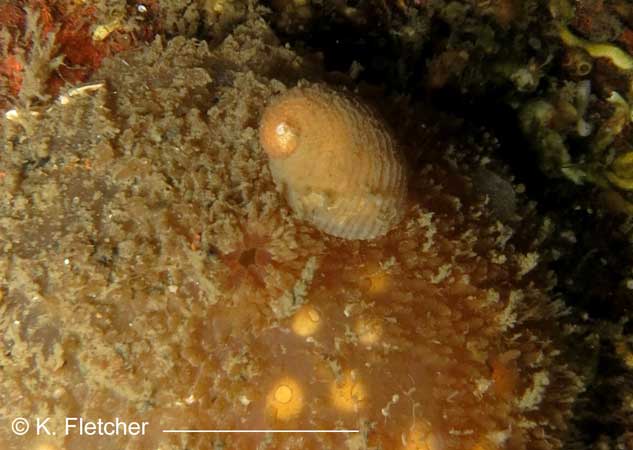 Port Townsend, WA, subtidal
Port Townsend, WA, subtidal
Velutina velutina (O.F. Müller, 1776)
Spiral Velvet Snail
subtidal
to 100m size to 20mm
central California to
northern Alaska;
circumpolar, south to Maine & the Meditteranean
This species is infrequently found intertidally. The shell has spiral ridges
under its thick brown periostracum. It is found on rocks near
tunicates.
(synonyms - Velutina laevigata, Velutina plicatilis, Velutina sitkensis, Velutina cryptospira)
Naticidae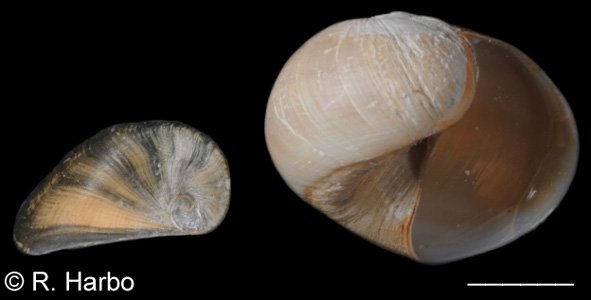 Swiftsure Bank, BC
Swiftsure Bank, BC
Calinaticina oldroydii (Dall, 1897)
Oldroyd's Fragile Moonsnail
subtidal to at least 200m size to 70mm
north Mexico to south BC
This
species has a thin shell and generally a squat shape. It has a
wide, deep umbilicus. The horny operculum is has light brown rays
which indicate growth increments.
(previous name - Sigaretus oldroydii)
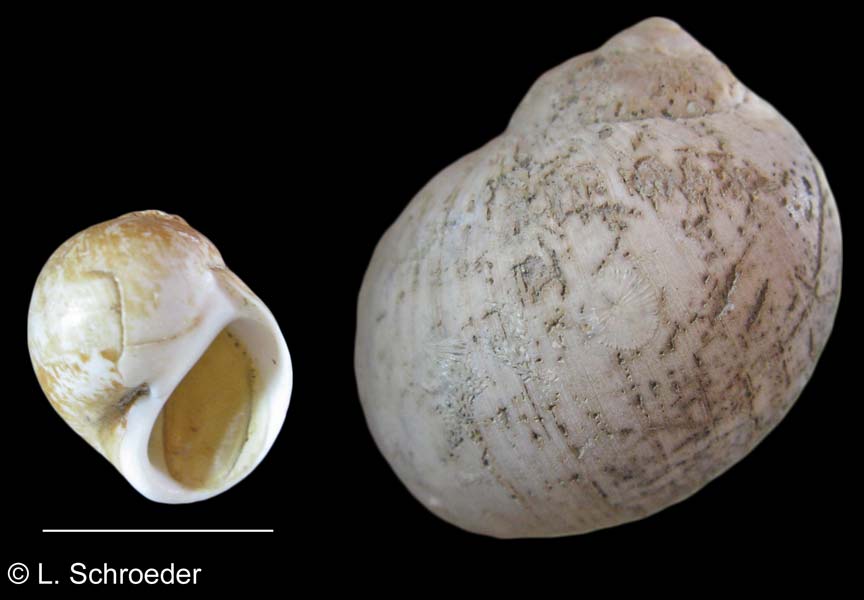 Victoria, BC
Victoria, BC
Euspira pallida (Broderip & Sowerby, 1829)
Pale Northern Moonsnail
intertidal to 500m size to 40mm
north Mexico to north Alaska; circumpolar
This
is rarely found intertidally. The umbilicus is almost completely
closed and it has a horny operculum. The living animal
is translucent white in color.
(previous names - Polinices pallidus, Lunatia pallida)
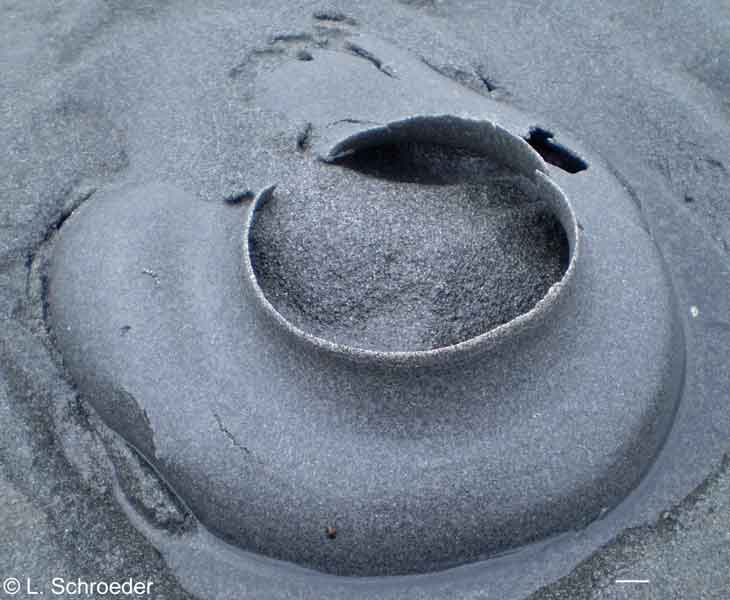
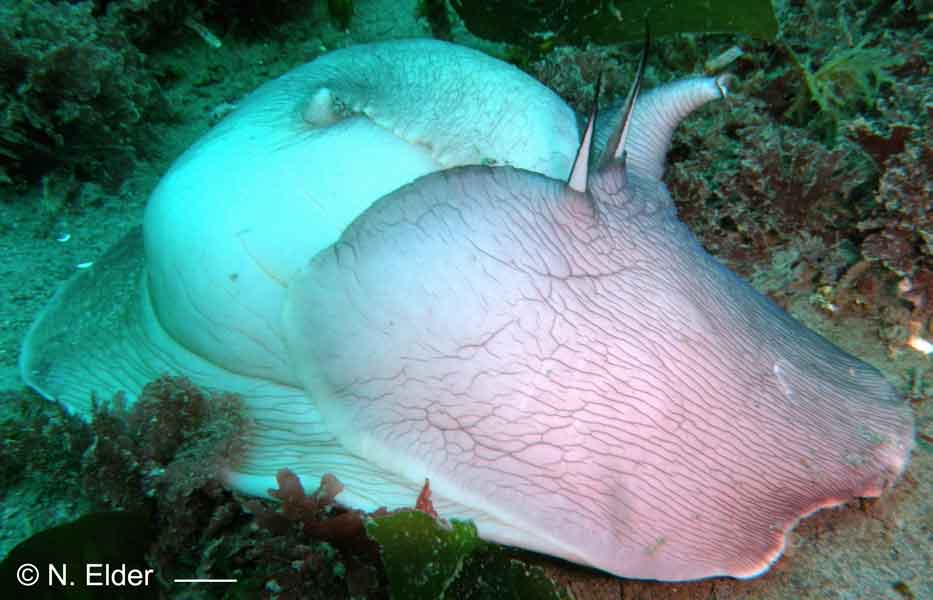
Birch Bay State Park, WA, intertidal, egg collar
Freshwater Bay, WA, subtidal
Neverita lewisii (Gould, 1847)
Lewis's Moonsnail *intertidal
to 180m northern Mexico to southern
Alaska; Japan size to 14cm
This is
commonly found intertidally. The shell's large size cannot be
mistaken for another. It has a brown, horny operculum. When
the animal extends out of the shell, it is much larger than the shell.
This predatory animal hunts clams, which it then drills into and
eats. By extruding all the excess water, the animal can then
retract completely back into the shell. The fully extended animal
in the lower right photo is over a foot long. The distinctive,
large egg collars are often seen on the beach as well.
(synonyms - Euspira lewisii, Polinices lewisii, Lunatia lewisii, Natica lewisii, Polinices algidus)




